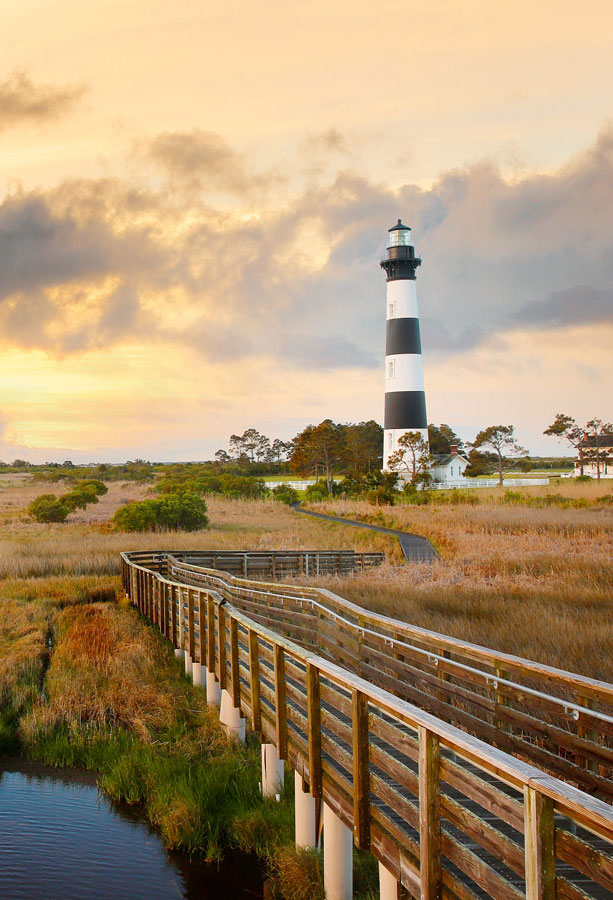The United States is still relatively young as far as nations go. But it’s safe to say that a lot has changed since European colonists first landed on American shores over two centuries ago. Back then, New York was known as New Amsterdam before the British gained control, and the governors of the various colonies reported to the British Crown. Ranging from battlefields to living history museums, these six historical sites are a must-visit for history buffs to learn more about life in early colonial America.
St. John’s Church – Richmond, Virginia

The famous words “Give me liberty or give me death!” were uttered by Patrick Henry within the walls of Richmond’s St. John’s Church. At the time, the church was known as Henrico Parish Church, and it gained fame after hosting the Second Virginia Convention in March 1775. With increasing tensions growing between the colonies and the Crown, it was here that Founding Fathers such as George Washington, Thomas Jefferson, and Patrick Henry met to discuss organizing protests against Great Britain.
Established in 1611, St. John’s remains an active church and is open to visitors. Proud of its place in history, the church hosts costumed reenactments of the Second Virginia Convention every Sunday during the summer. Scheduled group tours can be arranged, as can a one-man reenacted performance by Patrick Henry, the historic lawyer and fiery orator whose words helped to spark a revolution.
Colonial Williamsburg – Williamsburg, Virginia
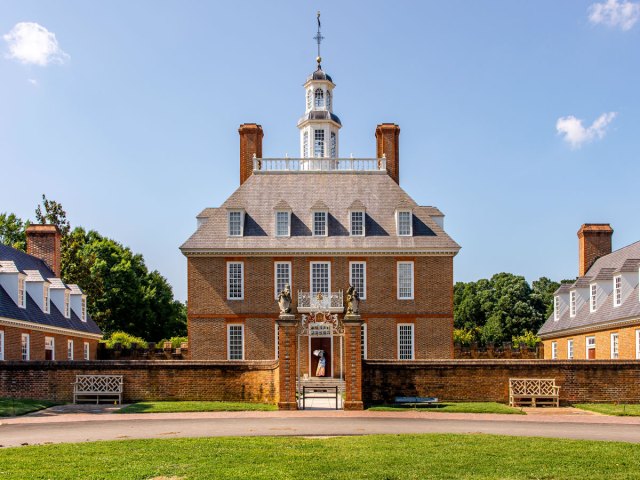
Visiting Colonial Williamsburg is about as close as you can get to experiencing early America in the 1700s. Home to 89 original 18th-century buildings — and hundreds of historically accurate reconstructions — the original capital of the Virginia Colony aims to educate visitors through live reenactments and theatrical performances.
In addition to guided and self-guided tours, visitors can ride through town on horse-drawn carriages, watch live silversmith and blacksmith demonstrations, and listen to costumed historical figures explain the ins and outs of everyday life in colonial Virginia. Don’t miss the Governor’s Palace, an impressive Colonial Revival mansion that served as the official residence of seven royal governors and two post-colonial governors, Patrick Henry and Thomas Jefferson.
New Amsterdam Trail – New York, New York
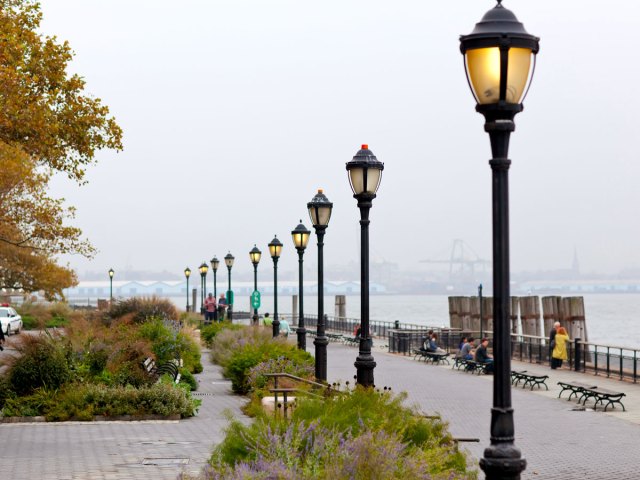
When Dutch colonists first arrived on the island of Manhattan in the 17th century, they named their settlement New Amsterdam in honor of their homeland. At the time, the Lenni-Lenape Native Americans called the island Mannahatta (“Island of the Hills”), prompting the Dutch to later adopt the same moniker for the region.
Today, the lives of these Dutch settlers are commemorated by the New Amsterdam Trail, a historic walking trail that traverses historic sites on the southern tip of modern-day Manhattan. Visitors can begin at Battery Park, which was once underwater and served as the original harbor where Dutch explorer Henry Hudson anchored his boat to explore Mannahatta. Be sure to stop by Wall Street, named for the wall built around New Amsterdam, and then mosey over to the former site of the settlement’s tavern. The site later became Stadt Huys, which served as Manhattan’s first City Hall. It is now marked by an outline on the foundation of the current building on the site, 85 Broad Street.
Nassau Hall – Princeton, New Jersey
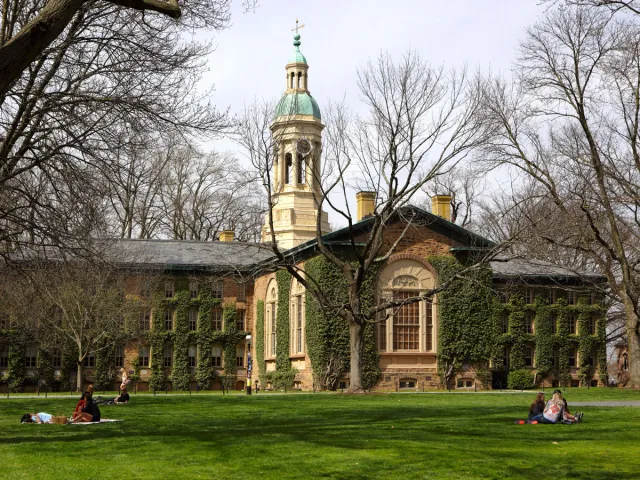
Though it’s home to a wealth of history, Nassau Hall is perhaps a lesser-known early colonial American site. Located on Princeton University’s campus, it was the largest stone building in the colonies at the time of its construction in 1756. Nassau Hall is also the oldest building at Princeton (formerly known as the College of New Jersey) — the hall was originally constructed in honor of King William III.
It wasn’t until the American Revolution that Nassau Hall became a key part of U.S. history. The campus was the site of the 1777 Battle of Princeton, a turning point in the war when the defeated British troops surrendered Nassau Hall to George Washington’s army. Six years later, it became the temporary site of the nation’s capital, where the Continental Congress met for half of 1783. Now home to administrative offices, this must-see on Princeton’s campus is open to visitors through private tours.
Roanoke Island – Outer Banks, North Carolina
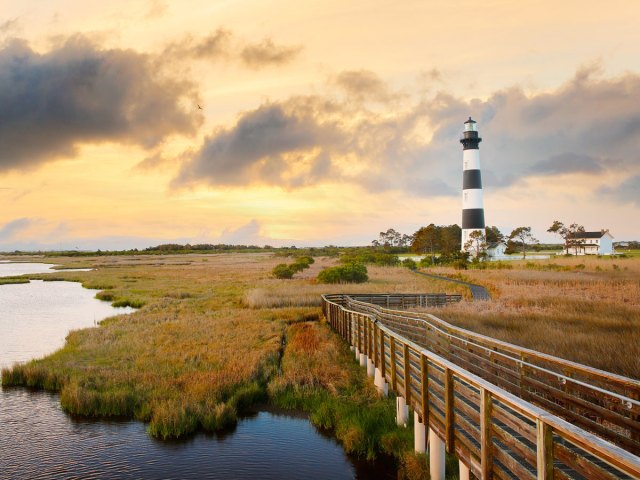
Though Jamestown, Virginia, was the first permanent English colony in America, a lost colony at Roanoke Island was established several years earlier, and it has long been shrouded in mystery. Founded in 1585 by Sir Walter Raleigh, the settlement hosted roughly 100 colonists before the entire population mysteriously disappeared with no signs of struggle. Today, historians assert that the settlers departed to escape drought conditions, or perhaps became absorbed into the native Croatan tribe.
Although the original settlement is no longer intact, its spirit lives on at Roanoke Island Festival Park. The recreated settlement features live demonstrations and costumed interpreters who teach visitors about colonial life in the 1500s. Visitors can also climb aboard Elizabeth II, a recreated 16th-century ship, or learn about canoe-making, weaving, and the lives of the Indigenous peoples of the region at American Indian Town.
Fort Ticonderoga – Ticonderoga, New York
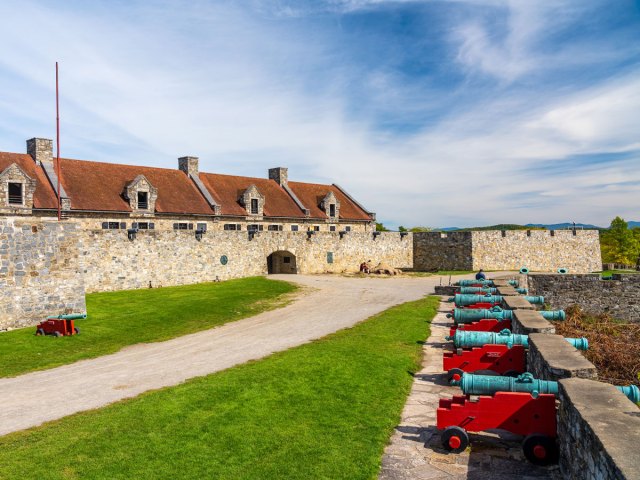
Fort Ticonderoga was originally built by French settlers in the mid-18th century as a stronghold between Lake Champlain and Lake George, and saw several conflicts as early as 1609. Derived from the Iroquois language, the name Ticonderoga loosely translates to “the place where two bodies of water meet.” As water was one of the easiest and swiftest modes of transportation during colonial times, the fort’s location was not only useful, but highly strategic.
After being captured by the British in 1759, the fort was later overtaken by American Patriots at the start of the Revolution. The siege was particularly important because it marked the first American victory in the war, a feat that allowed the rebels to procure a large amount of artillery. Today, the star-shaped fort is open to visitors, with guided tours, living history programs, and a daily weapons demonstration on the battlefield.
More from our network
Daily Passport is part of Optimism, which publishes content that uplifts, informs, and inspires.






